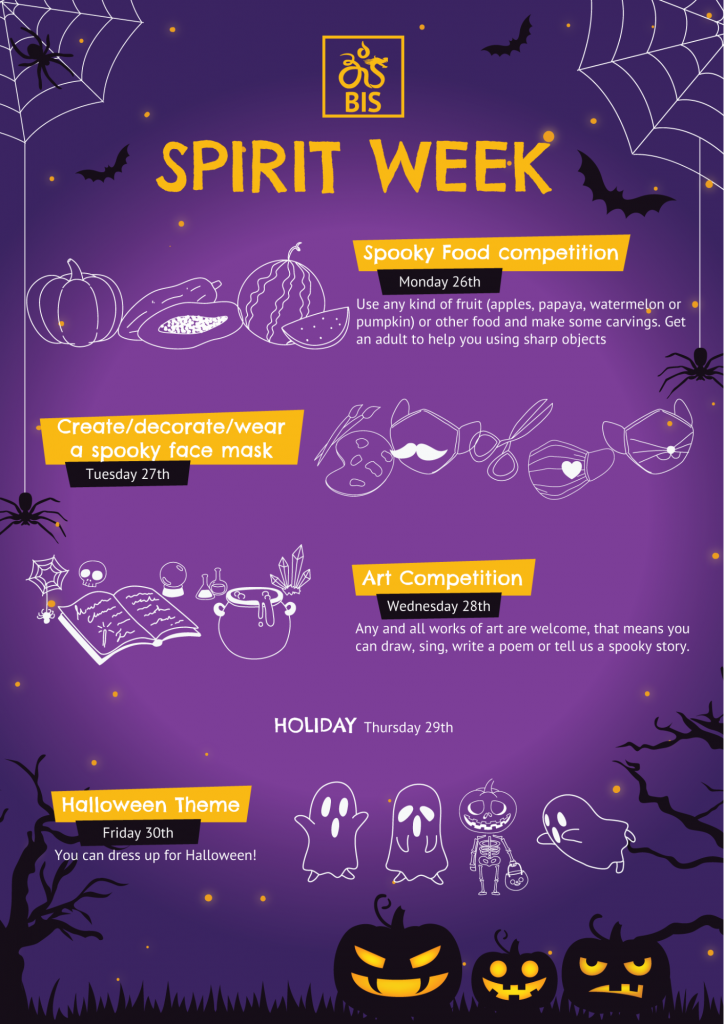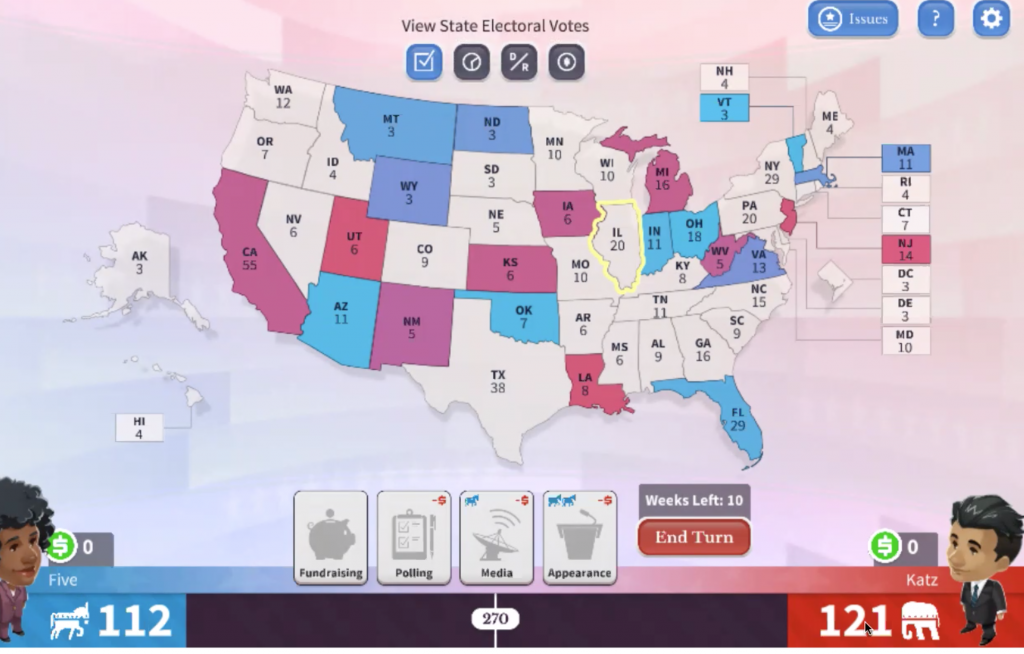Primary eNews – October 23, 2020
Primary Spirit Week
As part of their How We Organise Ourselves unit, Grade 5 is proud to announce SPIRIT WEEK! During the last week of October (starting Monday, October 26th) we will do a FULL WEEK of activities, making sure to raise school spirit! In primary school, all participating students will receive one house point for
Each activity they join. You can email activities to pypcoordinator@baliis.net
You can add photos and tally points to the slide deck. Thanks to Ibu Kristen for this.
The Spirit Weeks days are below….

Making It Fit
 The New York Times, one of the world’s “newspapers of record”, has, since 1896, used the slogan of “All The News That’s Fit To Print”. Fast forwarding to the current moment and relating to distance learning in 2020, that phrase could be modified slightly to “All The Learning That’ Fits in Class” or something along those lines.
The New York Times, one of the world’s “newspapers of record”, has, since 1896, used the slogan of “All The News That’s Fit To Print”. Fast forwarding to the current moment and relating to distance learning in 2020, that phrase could be modified slightly to “All The Learning That’ Fits in Class” or something along those lines.
In a “normal” school year, most teachers who have been at a particular school for more than a year have a pretty good idea of what units, lessons and skills they will be teaching and what activities and tasks will be used to deliver that content. This is mapped out over the course of the year and should line up with other related content being taught and can be enhanced by collaborating with other staff such as the librarian or language or support teachers. Of course, there are adjustments made in real-time and there are always unexpected events and the need to adapt throughout the year but these tend to be peripheral and not sweeping, large-scale shifts that drastically change the year-long planning.
Those norms – for now – are out the window. One of my biggest challenges during distance learning (online teaching) is facing the reality that some content and teaching methods that used to translate brilliantly (or be a favorite of teachers and/or students) now resonate and translate differently because the literal increased distance and unavailability of face to face learning renders the learning task either too obtuse, a “lost in translation”-type feel or the lacking in the needed engagement to make it work effectively.
An example of a learning task that now presents itself in a way that is not what was expected when it was previously being planned when it was originally conceived is using a suite of interactive education games via the iCivics website that teaches civics, government operations and history. This website has a plethora of high quality, digestible games but three in particular that are almost perfect when teaching within the Grade 5 Unit of Inquiry “How We Organize Ourselves – Government”. In a normal setting, there would be direct interaction between the game choices/path and the students, the teacher and the students (with the teacher as a guide to fill in the “blind spots” of content in the game that requires a clear and quick explanation) and between the students themselves, as they would be grouped into smaller groups to take turns conferencing and ultimately making a choice that the game requires. Additionally, the engaging and aesthetically pleasing landscape of the game (complete with humor and drama) is tailor-made for classroom use and a whole-class exchange of ideas, strategies and new knowledge.

In a distance learning setting, this dynamic can change dramatically. Besides having to use online video conferencing software as a conduit to allow students to view the actual content (which can have literal severe lags), the fast feedback and response to what is happening slows down and get muddled. Student interaction is usually changed to individual responses instead of group conferences and thus the risk of boring other students as they wait for their turn to participate increases. Other challenges include receiving audio content accurately (due to the invisible boundaries of receiving instruction digitally), interruptions and distractions and less time for the fun stuff as directions and explanations are usually required to be longer or repeated. The loss of exciting, palpable energy that manifests itself into motivation to stay engaged, try hard and ultimately “win” can also dissolve into the ether in online learning.
There are ways to rectify some of these issues. Instances like iCivics allow for students to practice being independent and navigating the game tasks on their own, at their own pace (this can still be a challenge for students who are still learning English and/or who have inferior tech hardware and internet connectivity) and achieve an authentic sense of accomplishment. The game can still be played with the individual student replacing the whole class. Students are also given more responsibility and trust to complete these tasks on their own, which can speed up maturity and resiliency for future endeavors. Students and teachers could also be proactive and schedule times to play the game in smaller groups together. This could also force students to become more adept at following directions independently (though this could also work adversely by making tasks that much harder for students who require support when starting a learning activity).

Teachers can try to blunt some of these negative effects by using different delivery methods for the content, such as pre-recorded directions. These directions, combined with effective and easy to use screen-casting software that allows students to see both the teacher and the content on the screen simultaneously, can offer students who learn in a variety of ways quality options of understanding the task which they may have to do more independently than previously planned; plus, they can re-watch and pause these directions as much as they need, which is an advantage not available in traditional in-person settings. Classes can then come back together after everyone has played the game independently and compare notes, give feedback and even swap recordings of each other’s experiences.
Teachers can also collaborate with other teachers to co-teach different parts of the lessons to keep students engaged or to avoid repetition. Collaboration can expose new perspectives, fresh ideas and troubleshooting on familiar issues that other teachers may have experienced previously.
Whatever the way that delivery instruction and receiving learning can “fit” into these new digital puzzle pieces, the one constant is the effort and drive for quality by those of us in charge won’t be left on the cutting room floor.
-Mr. Marshall, Librarian
Counseling
Positive affirmations are positive phrases or statements used to challenge negative or unhelpful thoughts. An example would be having your child say, “I am kind. I am smart. I am brave. I am responsible.”
Benefits of saying self-affirmations are:
- decreases health-deteriorating stress,
- leads people to exercise and eat healthily,
- links positively to academic achievement,
- lowers stress and rumination, and
- lessens the tendency to linger on negative experiences (C.Moore, 2020).
If you would like to try this with your children, here are some examples of positive affirmations for young children that you can print and use to start your day. If you prefer a video, this one should get your days off to a great start. Enjoy!






